My Homestay Experience on Amantani Island in Lake Titicaca
Lake Titicaca is famous for two things. It’s the highest navigational body of water in the world (this means large boats can use it). And it has a name that will make our inner child giggle - Titicaca.
Before blushing too hard, it’s actually pronounced titiq’aq’a (use guttural qs). This comes from the Aymara language meaning grey or stone puma, which can be found on the Island of the Sun on the Bolivian side of the lake.
Puno is used as the mainland hub for visiting the lake, and most tourists take day trips out to the floating reed islands of Uros or further, to Taquile Island.
Recently, homestays have gained popularity and in this article I’ll go over my experience on the Lake Titicaca 2-day tour, which includes an overnight on Amantani Island. I’ll also give insight into the other islands of Uros and Taquile.
GO IF YOU LIKE:
QUIET | BOAT RIDES | LOCAL LEARNING | QUINOA | LANDSCAPE VIEWS
The highlights from my homestay on Lake Titicaca
Step onto the Uros Floating Islands
The Uros floating islands are the main attraction in Lake Titicaca. I was highly skeptical of this experience because I had read lots of reviews about how it all seemed like an elaborate act for tourists. I couldn’t find a tour that didn’t have a stop to these islands so I set my expectations and went in with an open mind.
The floating islands are only a thirty-minute boat ride from the port of Puno which makes them highly accessible. The irony is that they were initially built to limit access.
Before the Incas invaded, the Uros were the indigenous population in the area. In order to protect themselves from capture, they built the floating islands using reeds from the lake. Unfortunately, the Incas were able to find them and put most of the population into slavery.
To this day only about a thousand decedents still inhabit the islands and tourism has become a big part of their income.
The process to build and maintain the island is explained on the tour through a demonstration. It involves gathering nearby reeds and forming them into large blocks using sticks and rope. These blocks are then attached to the island, creating new layers which last between twenty to thirty years. Standing on the island feels stable, yet cushy. It’s remarkable to think that everything is held together by sticks and rope.
After the demonstration, a friendly local women brought us into her home to show us her clothes, bed and surprisingly, TV. Yup, out on the lake this population is able to stay connected with the use of solar panels to power up their electronics.
After the visit we were taken for a boat ride to a second floating island. The ride itself was pleasant but when we exited the boat we were told to pay (a small fee) for the ride. I don’t like hidden costs, so this left a bad taste in my mouth. This feeling is going to be a common theme among many articles written about the Uros Islands. But here are a few things to keep in mind.
Because of the uniqueness of these islands, there are lots of tours. Unfortunately, the local people only see a fraction of the tour money, so they rely on the sales of their products to supplement their income. In addition, the maintenance of the islands is highly time consuming. Every additional person who steps foot on the island, adds strain and breaks down reeds, causing rot. This means that tourism has added additional work for the locals.
These reasons are why the visit can feel overwhelming. There’s a hard sell to buy products and small hidden fees. It can feel like a major tourist trap.
Putting these feelings aside, I’d say that seeing man-made-floating-reed islands that have been around for hundreds of years is actually… pretty cool.
The Boat Ride to Amantani Island
Getting to Amantani Island, from Puno, takes roughly three hours. This includes the stop at the Uros.
I’ve never been a water person, since I hate boat movement, but this ride was incredibly smooth. It started slow, as we made our way through tall reeds. Then picked up speed when we eventually got out into the open water.
The boat had three parts, the inside, outside back and outside upper deck, there was also a bathroom on board. The weather was absolutely perfect so I found myself the perfect spot in the back and just sat there for three hours, watching the mainland get smaller and the islands get bigger.
For someone who doesn’t like boats, this may have been my favourite few hours on my entire trip in Peru. I think a lot of it had to do with the calm waters and fresh air. I felt like I could finally relax and have time to myself.
Safety Tip
Regardless of the temperature, Lake Titicaca’s elevation will never change. At 3,812 meters (12,500ft) it’s imperative to wear sunblock and cover up. Sitting in the sun for three hours can result in an array of issues, and when headed out to a remote island, with limited facilities, it’s not worth taking the chance.
Welcomed at our Homestay on Amantani Island
We docked on Amantani Island in the afternoon. We were greeted by three local families, who would be taking care of our ten-person group. The families on Amantani Island, who participate in the homestays, rotate hosting duties. This means families can’t be requested, nor confirmed in advance.
Our host family consisted of David and Flavia (the mom and dad in the above picture) and Boris and Dolly their son and daughter.
To get to their house we had a twenty-minute uphill walk. It may have been easy at sea-level but at this elevation every step was a challenge.
We were lucky because the tour guide was also staying at our home. This meant we had a translator who could help bridge the language gap.
I knew that our accommodations would be modest and likely without electricity, but I was pleasantly surprised when we arrived at the home.
Our rooms were beautifully decorated and there was one light switch, though we tried not to use it. The home also had basic toilet facilities but no sink with running water.
The best part was the view from the bedroom. When I stuck my head out the window there was no noise, except the occasional sheep.
After settling in, it was lunch time. Flavia had prepared a quinoa soup and potatoes with grilled cheese and veggies. After talking to the other groups it sounds like they had the same meal. My assumption is that the food is regulated by the tour companies for health and safety reasons.
After the meal, we offered to help clean and the family seemed to be ok with that. So we washed the dishes and rested for about thirty minutes before getting ready for our sunset hike.
The sunset hike on Amantani Island
Just before sunset we headed for our hike. We were told some of the greatest lookout points were at the top of the island. We just had to walk there.
The altitude made it challenging but we paused frequently enough to catch our breath. Along the way our guide gave us coca leaves to chew, which is supposed to help with altitude sickness. Not sure if it did; I felt fine but I had also been following a list of best-practices and acclimating for the previous 6 days.
There are two Inca temples on Amantani Island, they both offer lookout points and they’re both a trek to get to. One temple is called Pachamama (Mother Earth) and the other is Pachatata (Father Earth).
These templates are closed throughout the year, with the exception being the third Thursday in January which is when the island celebrates their annual feast.
We could see a storm brewing on the horizon but our guide was positive we wouldn’t get rain. His only concerned was getting us home before dark. The unlit and uneven paths on the island can be a hazard.
Since we only had time to visit one temple before sunset our guide recommended Pachamama. It was a longer hike but apparently had more rewarding views.
And “damn”, he was right.
On the way back down to the house we stopped at a local store and picked up a pack of chips and a chocolate bar. We watched some kids play volleyball; some of us joined in.
Back at the house we took a moment to look out our window, at what would be the most colourful sky from the trip.
“Damn”, I thought again.
Day 2 on Amantani Island
The next morning Flavia made pancakes for breakfast. During the previous meals our hosts didn’t sit at the table with us, but we asked them to join us and Boris, the son, did. We also got to talk some more with the hosts.
We found out that the family was opening their house for homestays in order to make money to send Dolly, their daughter, to school in Puno. They said that most kids on the islands headed to the mainland for University and Dolly wanted to study tourism.
We also found that visits to the mainland are rare. There is a water taxi service for locals to use, however it’s expensive for most of them. Our family said they visit the mainland about twice a year to stock up on things.
They also told us that merchants come to the island to sell food and supplies. At a high altitude there isn’t much that can grow in terms of agriculture.
After breakfast we packed our bags and said our goodbyes. Before leaving, Flavia insisted we get dressed up in some Peruvian outfits which were very colourful and quite heavy.
David walked us back to the port and we waved goodbye from the boat.
We were off to Taquile Island.
Food for Thought
Before we left Puno on Day 1, our guide told us to pick up some gifts for the family. So we had bought some snacks and sweets as a thank you. Having talked to the family afterwards they said that rice is a great staple to bring as a gift.
They also appreciate fresh veggies, which they don’t get on the island (therefore no potatoes, green beans or barley). School supplies are another great gift if you know your family has kids. And as great as it may seem to us, sweets aren’t ideal since there’s no dental care on the island.
Walking the Paths of Taquile Island
Taquile Island is similar to Amantani in that it’s all walkable with high lookout points. The difference is that it’s more developed for tourism.
On Taquile the men are known for their knitting. They knit an array of clothing but the most interesting being their hats which act as a status symbol and tell a story about their lives.
Some are very long, meaning they likely belong to an elected official. The way the hat falls is a sign of their relationship status.
The women on the island are skilled weavers. They make the traditional belts called chumpis. For a marriage it’s common for the woman to weave her hair into the chumpi and then give it to her future husband.
The main square on the island has a building where the men show their techniques to visitors and sell their goods. It’s also a good spot to grab a snack.
Once on the island there are well established paths, but this doesn’t make it any less challenging to hike. Luckily the day was relaxed and there was time to stop and appreciate the views.
Depending on the direction it’s easy to spot Amantani Island and the distant Bolivian and Peruvian mainland.
After a few hours of walking we made our way, with all the other tour groups, to a restaurant that seemed to be established for tourism.
The seating was outdoors with a view of the water. The weather that day was perfect, we had small gusts of wind and a clear blue sky. We were served a traditional Peruvian meal of quinoa soup and trout and french fries.
Again, it was a set menu for all the tourists on the island.
After we finished eating, it was time to head back to the boat. We had a three-hour ride back to Puno ahead of us.
I lay down on the outside of the boat, with the wind blowing in my hair. I took one last look at the Islands as they grew smaller in the distance.
2-Day Lake Titicaca Tour Itinerary
Day 1
The Uros Floating Islands, three-hour boat ride to Amantani Island, sunset hike
Day 2
Breakfast on Amantai Island, take a boat to Taquile Island, hike on Taquile to restaurant for lunch, boat back to Puno
Getting to Lake Titicaca
There are several ways to get from Cusco to Lake Titicaca (Puno). I splurged on a luxury sleeper train, The Belmond Andean Explorer. It fit in nicely with my two-week itinerary for Peru.
You can read about my experience to see if the luxury train is something you’d like to try. I also outline other, cheaper, methods of transport.
Amantani Homestay Tips
Keep these tips in mind when booking your tour:
1. Ensure that your fees are transparent
We were charged an extra 20 soles for the boat ride in Uros, without being told upfront about it. While it’s a small amount it still felt icky. Note that the cultural experience offered by All Ways Travel doesn’t include meals. Therefore it’s important to bring extra cash to give the family for the food. Review the included and excluded fees before booking.
2. We didn’t have an evening of dancing
Though it was advertised as an after-dinner activity, we didn’t have an evening of singing and dancing. I have read from other people that they did, so it might have been the fact that my group was tired, so it wasn’t offered. Truthfully, we all wanted to go to bed, so it worked out for us. Just know, if you have your heart set on this activity you may have to ask for it.
3. Don’t go expecting different food
The meals are standard and there’s no restaurant options for tourists on the island. Likely for health and safety reasons, everyone gets the same meal, regardless of their family. That meal is quinoa soup, trout and potatoes (which were all very good).
4. Travel with a day pack only
Take your essentials for an overnight and leave your large luggage at a hotel in Puno or with the tour company. This is important because the hike from the dock to the home isn’t easy and you don’t want to be lugging a suitcase.
5. October and November are the best times
According to our guide, these are ideal times because there are less tourists and better prices. Note it will be warmer during these months but late November is the start of the rainy season.
6. Bring a gift for the host family
I’ve mentioned this above but you’re encouraged to bring a gift for the host family. After talking with them they appreciate rice and fresh vegetables (other than potatoes, barley and green beans which they grow on the island). Most families have kids, so school supplies are also beneficial. Avoid sweets and candy, since the families don’t have access to a dentist on the island.
7. Bring hand sanitizer
Most homes don’t have running water so don’t expect to be taking any showers.
8. Consider a portable charger
The link below is an affiliate link, meaning, at no additional cost to you, I will earn a commission if you click through and make a purchase. As always, I only recommend products and services I trust.
In many cases your homestay may not come with electricity. I used a portable solar charger which made sure my phone was ready to go at all times.
9. Bring extra water
Think about the water you will need for two days. There aren’t many places you can buy water on the islands.
10. Don’t leave your trash on the island
This is self explanatory right?
11. Bring warm clothes
It can get cold at night. Our family had lots of blankets, but we also made sure to bring warm pajamas. There’s no heating in the rooms.
Tour CostS
The people of Taquile and Amantani islands appreciate the income from tourism however there are many tour companies that give small portions of the revenue back to the families. I liked that the Cultural Tours from All Ways Travels have a portion of the cost that goes directly to the families.
$50USD/person
This includes:
Transport from hotel in Puno city to the dock
A Spanish/English-speaking guide for the 2 days (though not necessarily in the home)
Activities while on the tour and transportation via boat
This excludes:
Accommodation and meals with the homestay family. This is an incremental 50 soles ($13/person) and goes directly to the host family. This additional cost covers the 3 meals, bed, clean linen and basic toilet facilities.
Lunch on Taquile island
Book with All Ways Travels
Packing List
All sun-related items: sunglasses, sunblock, hat
Hand sanitizer
Comfortable hiking shoes - the terrain is a path but uneven
Warm clothes for the evening - I slept in pj’s socks and a hoodie
Check out my full packing list for Peru here.
basic Quechua Phrases
The tour guide isn’t around at night and most families speak Quechua or Aymara. Here’s a cheat sheet with a few useful phrases to help with the language barrier.
Preventing Altitude Sickness
As someone who was absolutely paranoid about getting sick I can happily report that I was perfectly fine. With that being said I took many precautions and started acclimatizing 6 days earlier in The Sacred Valley.
Altitude sickness is a very real issue and on remote islands it can be difficult to get proper medical care or descend to lower altitudes.
I prepared a free handout with everything I did to avoid altitude sickness in Peru. As someone who had experienced it before in Colorado, I wasn’t risking it again.
Need Help Planning a trip to Peru?
Contact me for travel planning services.


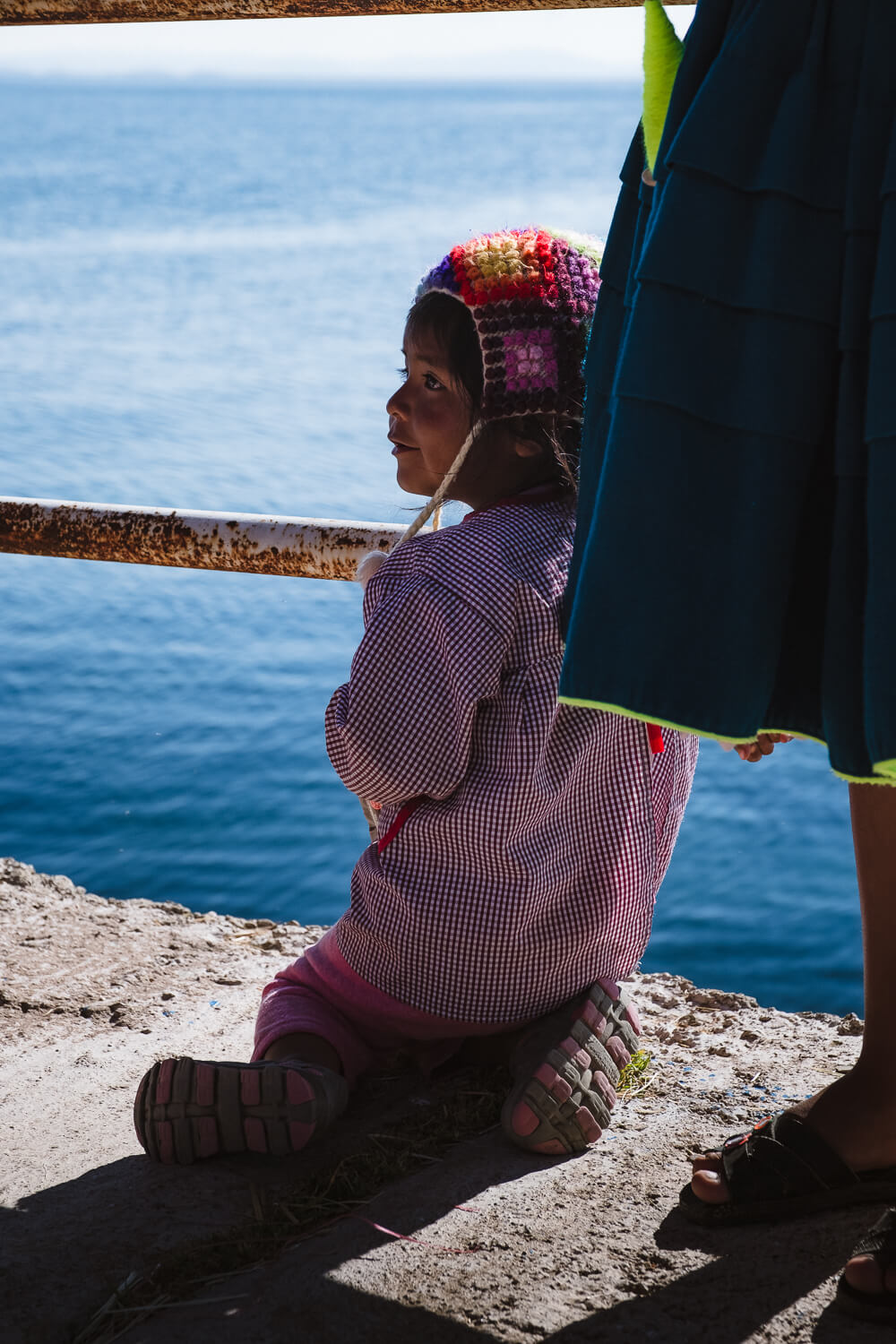






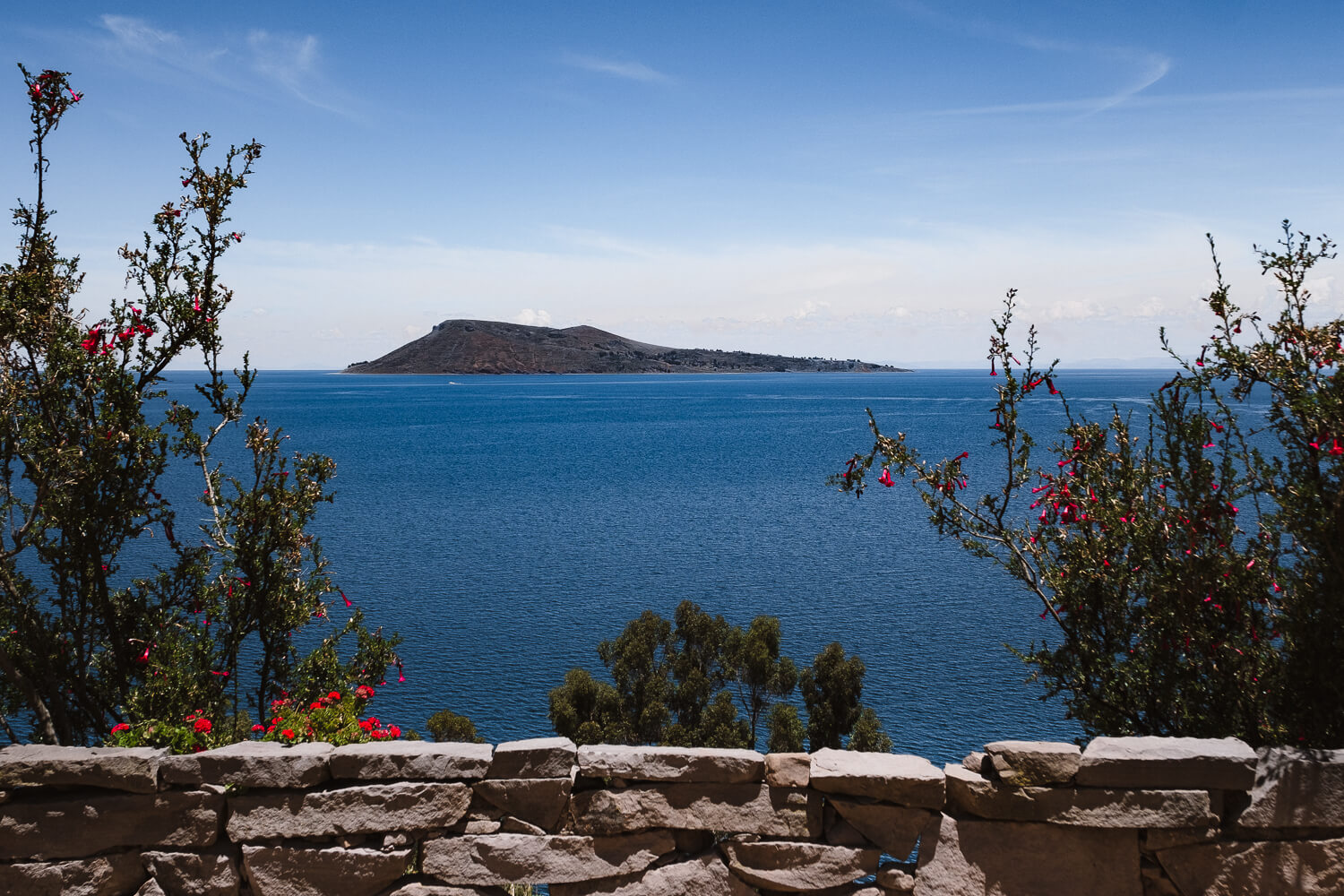






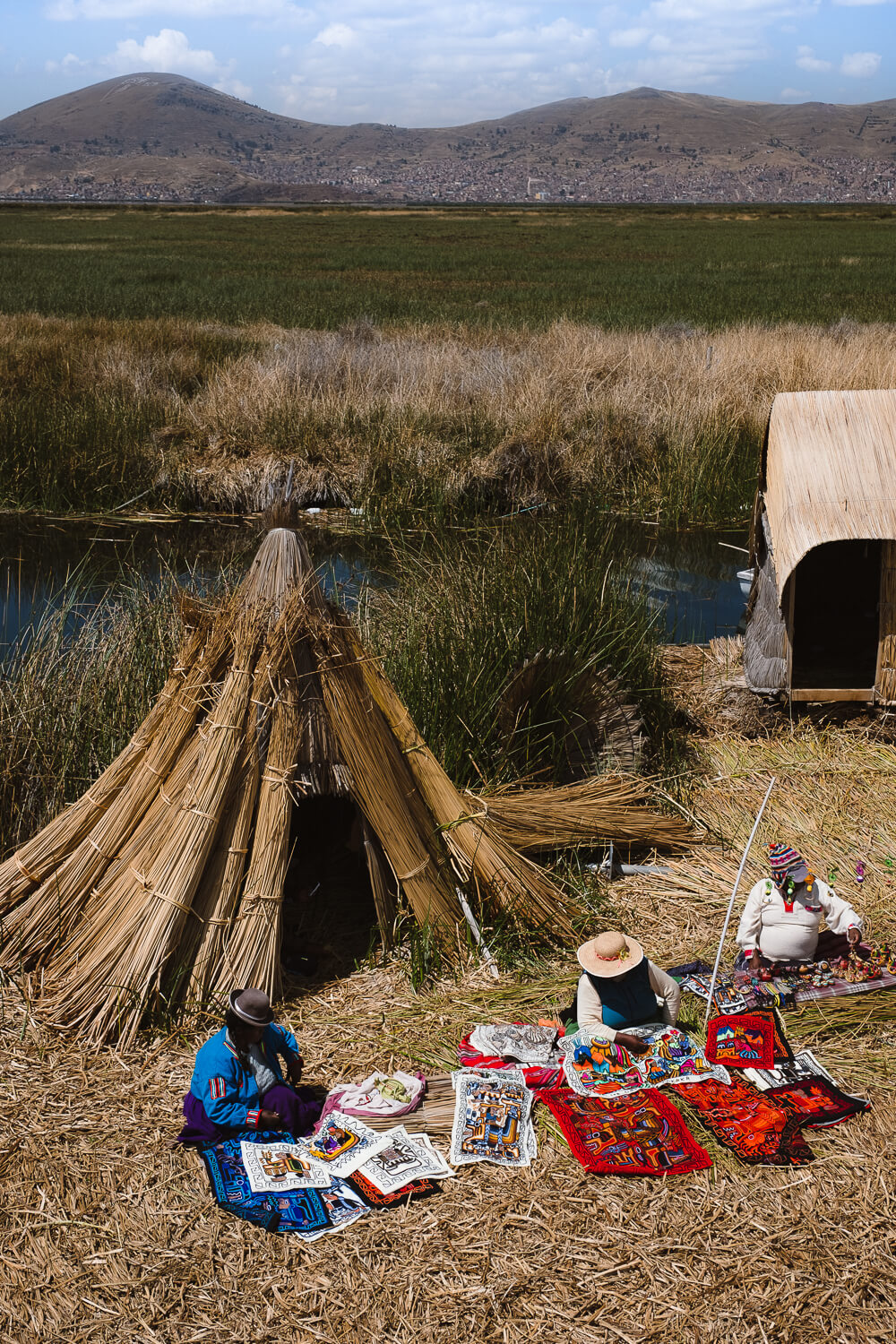
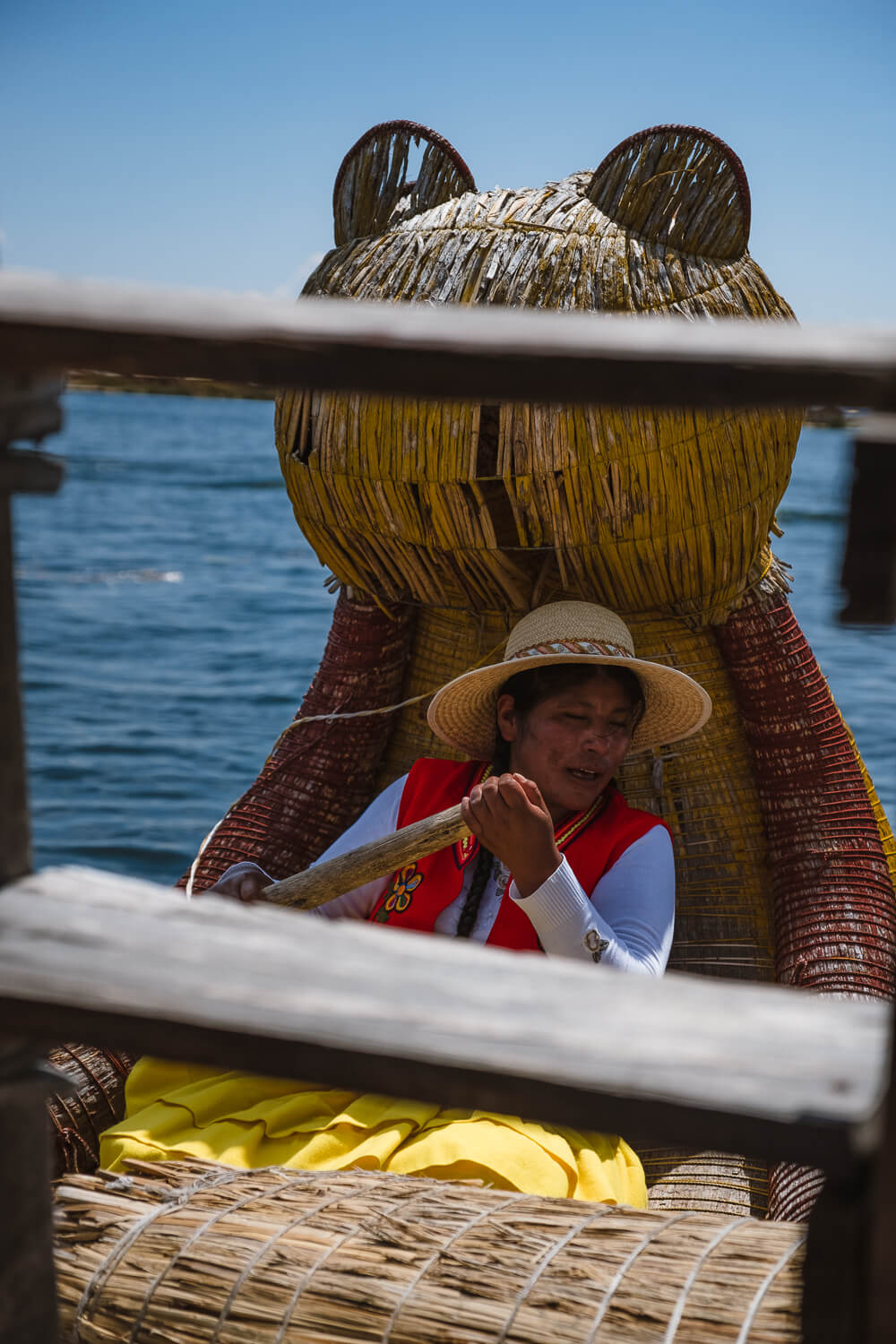

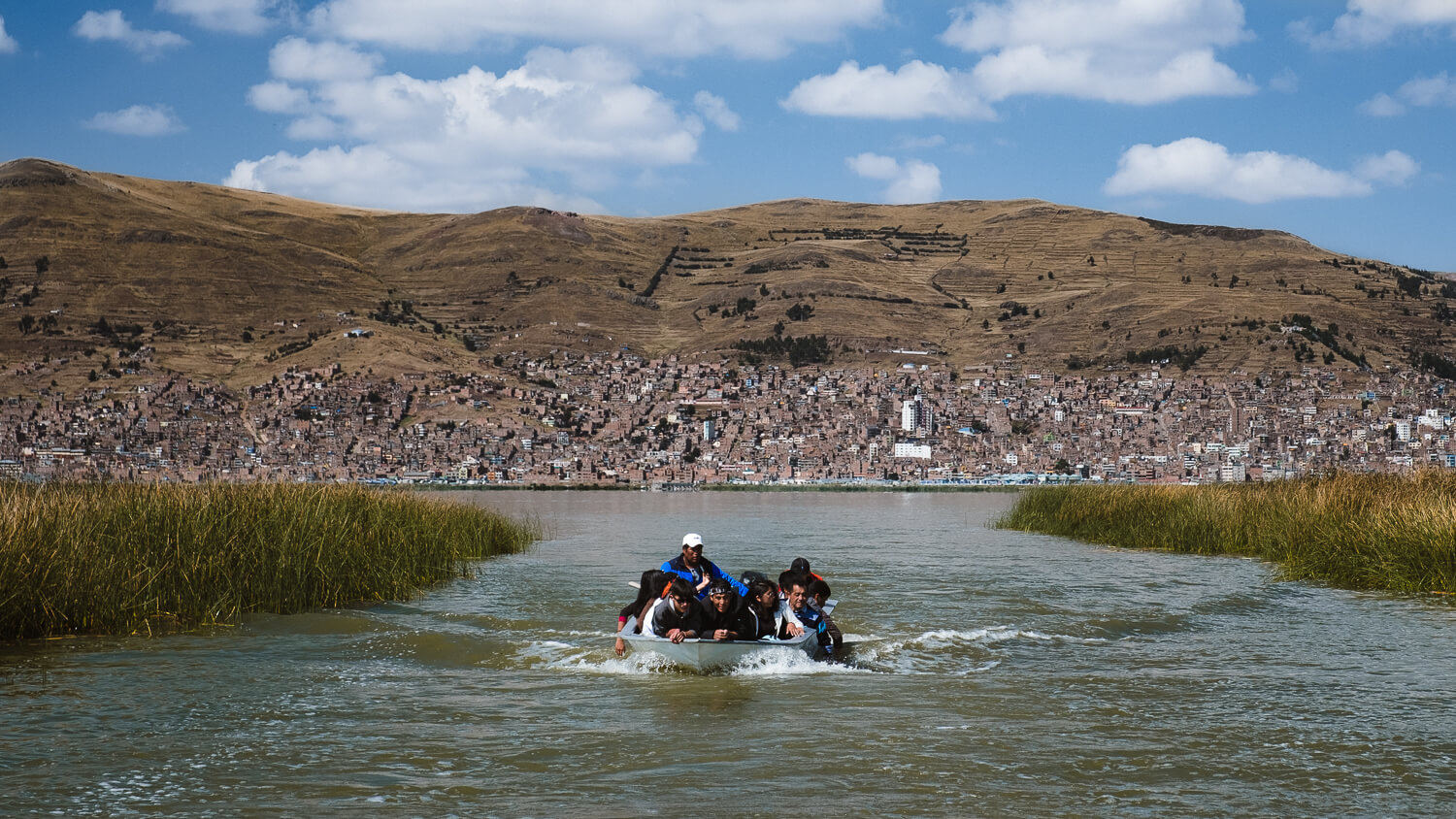
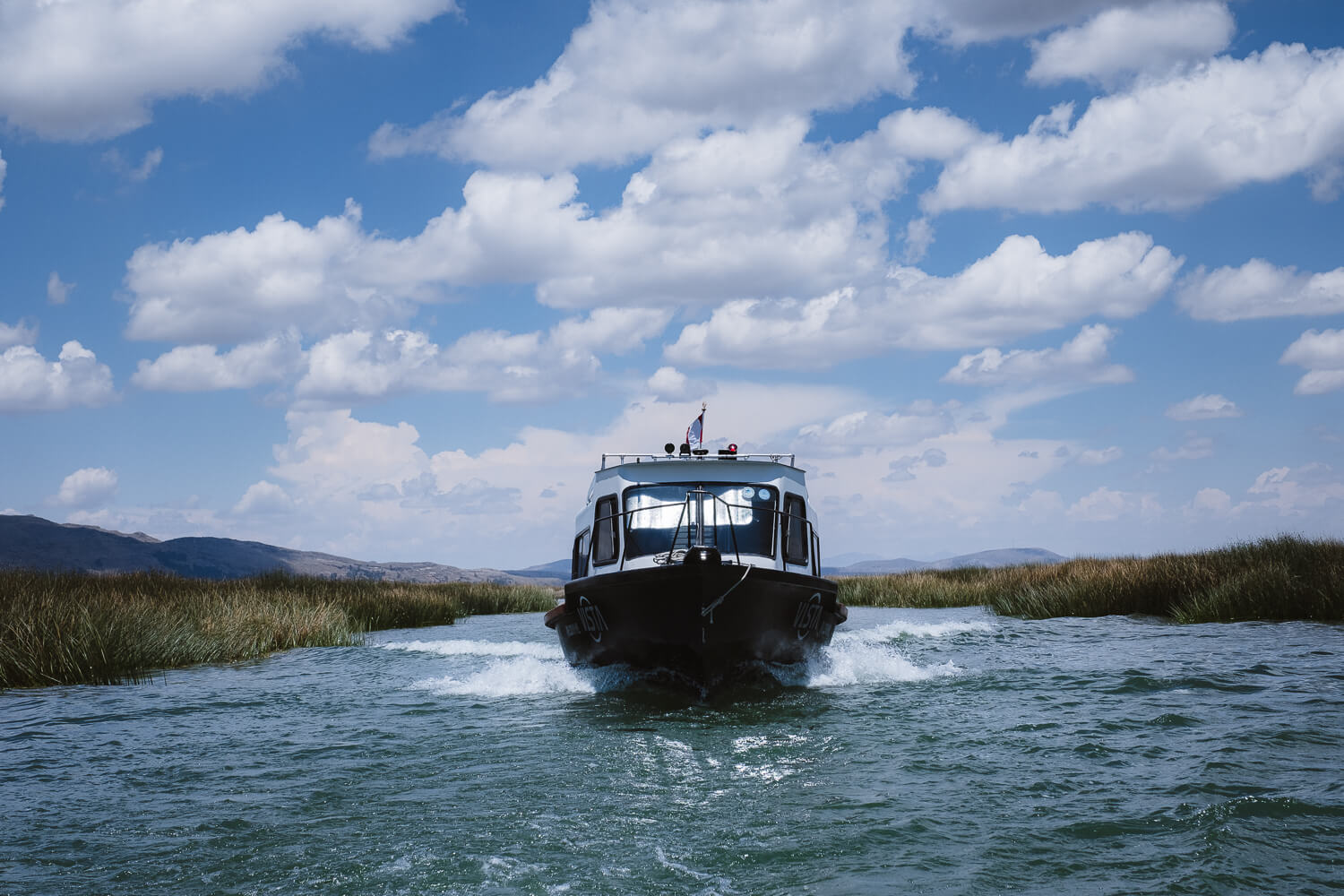
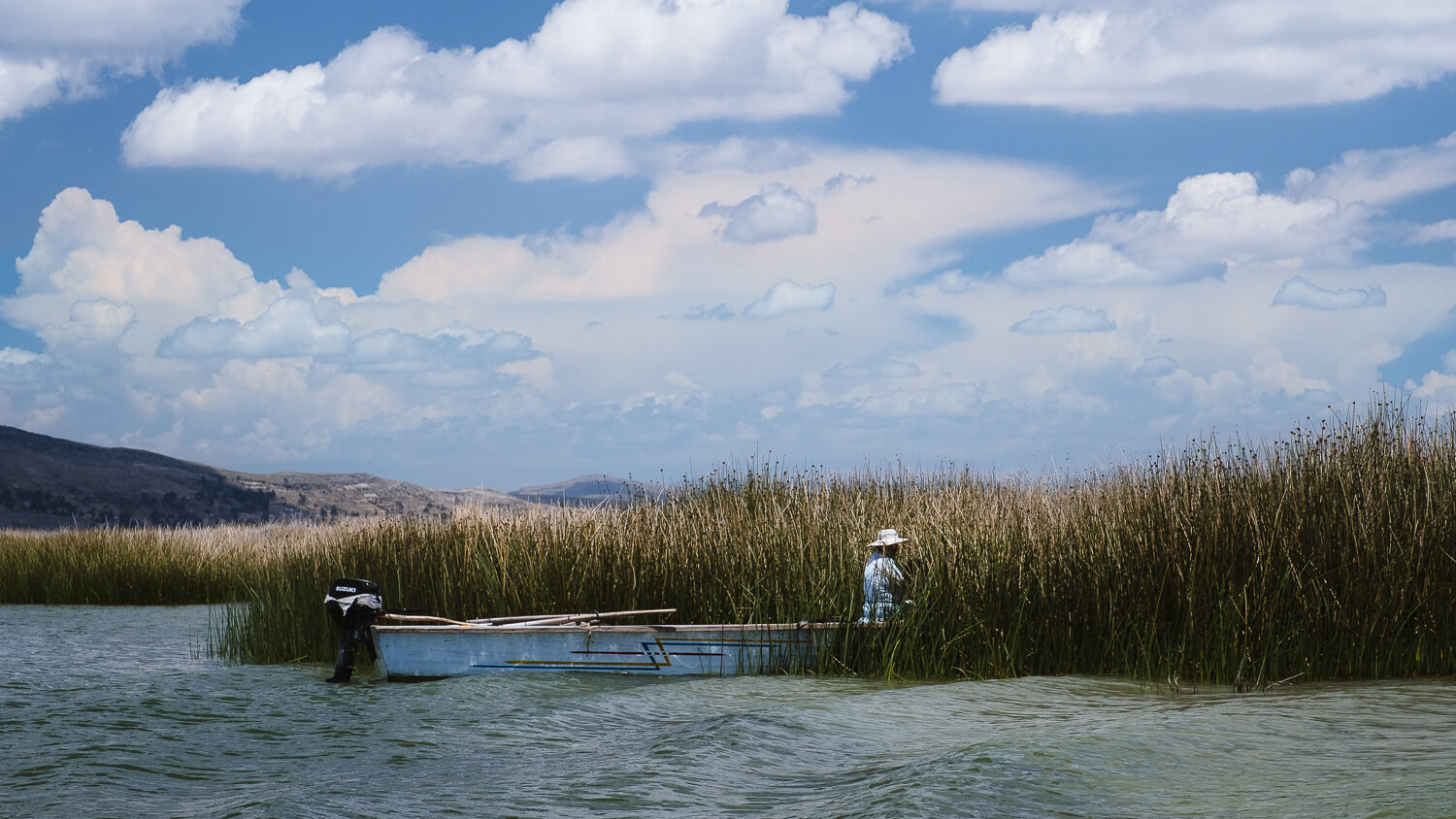






































I’m sharing my journey on the Belmond Andean Explorer. It’s a luxurious way to get between Cusco, Lake Titicaca (Puno) and Arequipa. I’ll give you my honest thoughts on if I think it’s worth the hefty price tag.